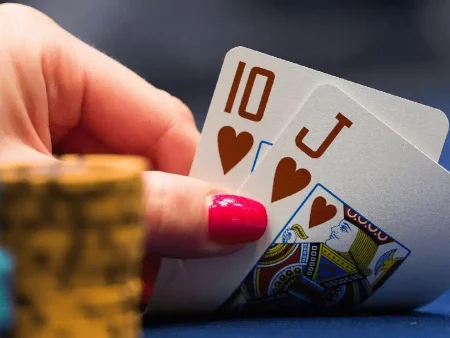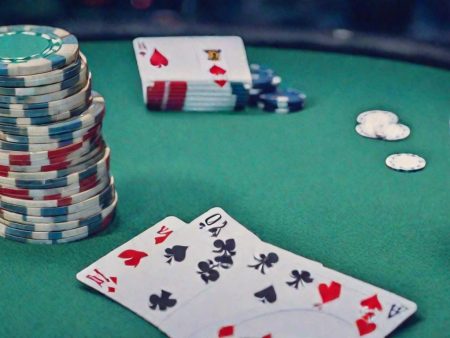The four main suits in a deck of cards—spades, clubs, hearts, and diamonds—have been a staple for centuries, remaining unchanged through time. These suits are universally recognized and used in almost all card games, whether it’s classic games like fool, solitaire, memory, and bridge, or other variations found in various entertainment formats. Decks of cards have even become a tool for children, who often create their own non-gambling games with them.
However, it’s interesting to note a moment in history when there were attempts to introduce a fifth suit to the deck. In 1937, an experimental deck featuring an additional suit called “Royals” was introduced. This suit was marked with a royal crown, but despite the unique design, it never became widely popular among players. Over the years, different versions of this fifth suit have appeared. Some decks depicted it as elegant maple leaves, while American versions used the symbol of green eagles.
It’s important to note that because there were no strict guidelines for designing the fifth suit, it led to a variety of interpretations. Today, collectors are actively seeking out rare decks with unique fifth suits and are often willing to pay premium prices for them.
Suits in Poker: Their Role and Significance
A standard poker deck consists of 52 cards divided into 13 ranks, from two through ace. These ranks are spread across the four suits: hearts, diamonds, spades, and clubs, each distinguished by their own symbols and colors. While suits generally don’t have a significant impact in most poker variants offered by online casinos, they do hold strategic importance in certain variations of the game. In some cases, suit precedence can even influence the outcome of a hand.
For example, in most classic poker games like Texas Hold’em, suit precedence is usually overlooked, with the focus instead being on hand structures and combinations. However, in some more exotic poker variants, such as Omaha Hi-Lo, the suit can affect the determination of winning hands.
The Evolution of Card Symbols
The familiar 52-card deck originated in France and became the global standard. Although several other European variations exist, including German, Swiss, Latin, and Spanish decks, the French deck holds the dominant position due to the widespread popularity of card games designed for it. The symbolism of the four suits in the French deck reflects the feudal structure of medieval society: hearts represent the clergy and water, diamonds stand for merchants and land, clubs symbolize the peasantry and fire, and spades embody the military and air.
Read also: Sizing and siding in poker: how to choose the optimal bet size.
The Importance of Suits in Poker
In certain poker variants, cards of the same rank are ranked by suit, which can sometimes determine who places a mandatory bet. This is especially common in games that don’t use blinds, such as Stud and Razz. In Texas Hold’em and Omaha, however, the precedence of suits has little influence on the game. In Stud and its variations, suit precedence is an important factor in determining the sequence of moves, and in some cases, it also helps to resolve ties.
In Stud and similar games, the following hierarchy is typically used for suit strength:
- Spades
- Hearts
- Diamonds
- Clubs
This order only influences the sequence of actions and is used to determine the best hand during the showdown. When comparing two flushes, the highest-ranking cards within the flush determine which hand wins.
Uncovering the Terminology
In Stud, the player with the lowest open card must make the first bet, a move known as “bring-in.” This bet starts the action, and if multiple players have the same card rank, the suit precedence becomes crucial in determining who must act first. For example, in a seven-card Stud game, if one player shows a 3 of clubs and another shows a 3 of diamonds, the player with the 3 of clubs is required to make the bring-in bet, since clubs rank higher than diamonds. Conversely, in Razz, the player with the highest open card is the one who must make the bring-in bet. For instance, if one player has a Queen of diamonds and another has a Queen of clubs, the player with the Queen of clubs would be required to act first, as diamonds rank higher than clubs. This hierarchy only applies to the first round of betting and doesn’t affect later stages or the final hand. Understanding this strategic nuance can be pivotal in the early stages of a hand, where every decision has the potential to influence the final outcome.
The Bridge Buy-In: A Subtle Poker Strategy
For poker experts, especially those who specialize in nuances and tactics, the concept of the bring-in is often encountered in various poker variants. However, this rule, which mandates that the player with the lowest open card place the initial bet, is not applicable in all poker formats. In certain online poker rooms, such as Soko, American, or Telesini, the bring-in rule may not be used, and the suit precedence can vary significantly from the traditional Stud or Razz structure.
It’s also worth noting that specific casinos may have their own unique rules for comparing suits. To avoid confusion, it’s a good idea to familiarize yourself with the specific rules of the casino or poker provider you’re playing with. Some games may even use just two suits, making it essential to fully understand the rules beforehand.
Read also: Recreational poker players.
In most poker disciplines, hands with the same value are generally treated as equal, except when suit precedence is a factor. Even in flush situations—where all the cards in a hand are of the same suit—the kicker plays a decisive role. For instance, if two players have flushes, and one includes an Ace, the hand with the Ace will be considered stronger, even if the other flush has higher-ranked cards. Finally, if you were looking for online casinos that offer a minimum deposit, feel free to follow the link provided. For more insights on the gambling world, visit our blog for detailed information. Don’t miss out on important slot machine insights! Visit the slot and casino breakdown and uncover their secrets!
FAQ: Suits in poker: hierarchy and importance in the game
What are the four suits in poker?
The four suits in poker are spades, hearts, diamonds, and clubs. Each suit is represented by a distinct symbol and color, playing a role in determining hand rankings and suit precedence in certain poker variants.
How does suit hierarchy affect poker?
In most poker games, the suit doesn’t impact the hand strength. However, in variants like Stud and Razz, suit precedence can determine the order of betting or help resolve ties, with spades ranked highest and clubs lowest.
Do suits influence the outcome in Texas Hold’em?
No, suits generally don’t have an impact on hand rankings or the outcome in Texas Hold'em. The focus is on the rank of the hand, such as pairs, straights, or flushes, rather than the suits.
Are suits important in all poker games?
Suits are more important in specific poker variants like Seven Card Stud, where the order of the suits can determine who acts first or help break ties. In games like Texas Hold’em, suits play little to no role.
What is the typical order of suit strength in poker?
The standard suit hierarchy used in games like Stud and Razz is as follows:
- Spades
- Hearts
- Diamonds
- Clubs
Do suits affect flush hands in poker?
In flush hands, suits themselves don’t determine the winner. The highest card in the flush is what matters. However, in rare instances where suits are needed to break a tie, the suit hierarchy may apply.
What is the “bring-in” bet, and how does suit hierarchy affect it?
In games like Stud, the player with the lowest open card must place the initial "bring-in" bet. If players have the same card, suit precedence is used to decide who acts first, with clubs being lower than diamonds, hearts, and spades.






